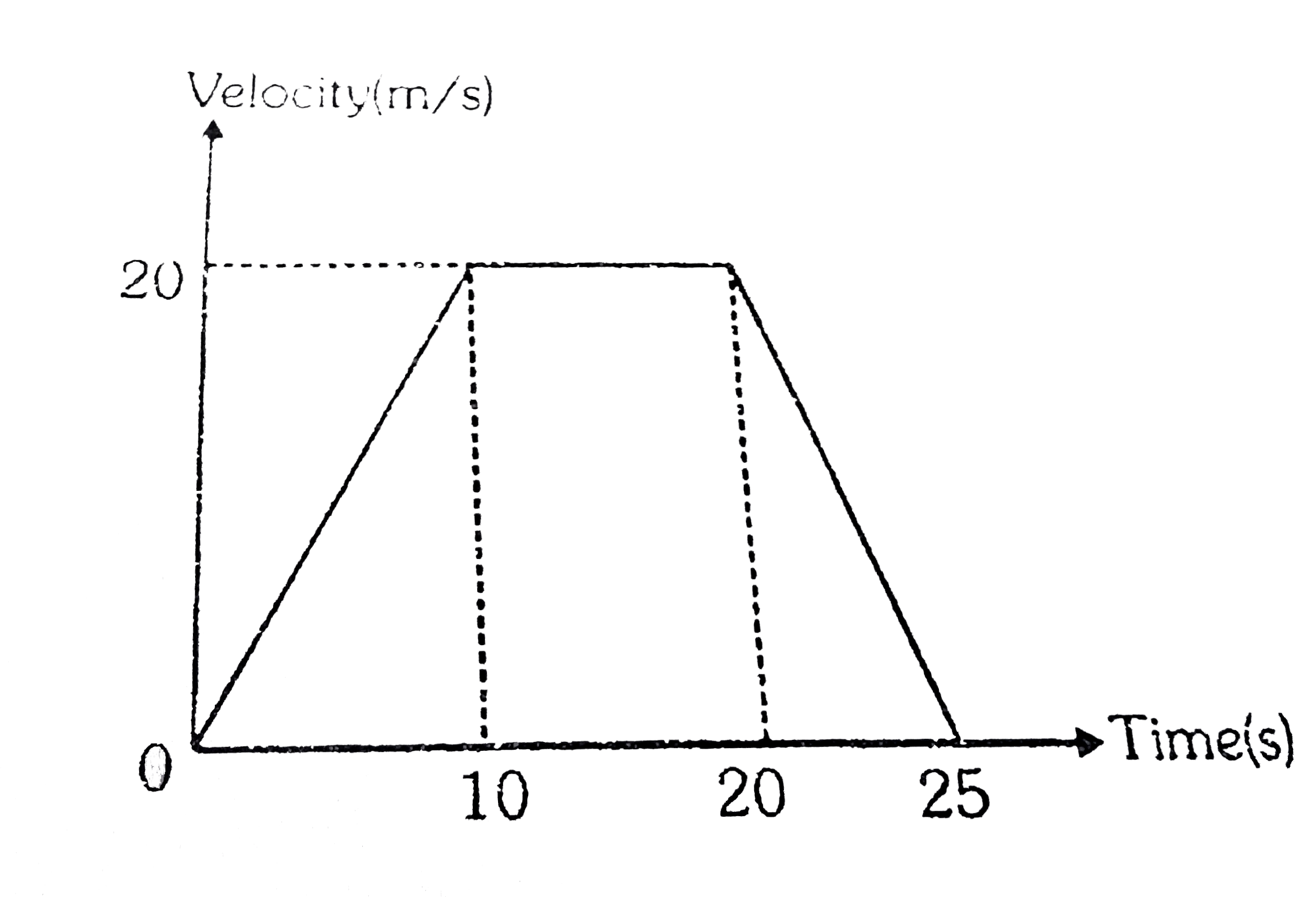A car moves along a straight path with variable velocity as shown in the figure. When the car is at possiting A, its velocity is 10ms−1 and when it is at position B, its velocity is 20ms−1. If the car takes 5 seconds of time to move from A to B, find the acceleration of the car.

Initial position of the car at position A=u=10ms−1
Final velocity of the car at position B=v=20ms−1
The change in velocity of the car, Δv=v−u=20ms−1−10ms−1
=10ms−1
The time taken for the car to move from A to B, Δt=5s
∴ Acceleration of the car, a=ΔvΔt=10ms−15s
=2ms−2
Topper's Solved these Questions
- BOOK - PEARSON IIT JEE FOUNDATIONCHAPTER - KINEMATICSEXERCISE - TEST YOUR CONCEPTS (VERY SHORT ANSWER TYPE QUESTIONS)30videos
KINEMATICS
- BOOK - PEARSON IIT JEE FOUNDATIONCHAPTER - KINEMATICSEXERCISE - VERY SHORT ANSWER TYPE QUESTIONS15videos
KINEMATICS
- BOOK - PEARSON IIT JEE FOUNDATIONCHAPTER - CHEMICAL EFFECTS OF ELECTRIC CURRENTEXERCISE - COMPETITION CORNER (MCQ)48videos
CHEMICAL EFFECTS OF ELECTRIC CURRENT
Similar Questions
A car moves along a straight path with variable velocity as shown in the figure. When the car is at possiting A, its velocity is 10ms−1 and when it is at position B, its velocity is 20ms−1. If the car takes 5 seconds of time to move from A to B, find the acceleration of the car.
 View Solution
View SolutionA driver decreases the speed of a car from 25 m/s to 10 m/s is 5 seconds. Find the acceleration of the car.
View Solution
Knowledge Check
- Question 1 - Select One
A car is going east wards with a velocity of 8m/s. To the passengers in the car, a train appears to be moving north wards with a velocity of 15 m/s. What is the actual velocity of the train:
A7 m/sB17 m/sC23 m/sDNone of these - Question 2 - Select One
The velocity-time graph of a car moving along a straight road is shown in figure. The average velocity of the car is first 25 seconds is
 A20m/sB14m/sC10m/sD17.5m/s
A20m/sB14m/sC10m/sD17.5m/s - Question 3 - Select One
Starting from a stationary position, Sunil moves his car to attain a velocity of 20ms−1 in 10s. Find the acceleration of the car.
A2ms1B2ms−2C2ms−1D2ms2
A car moves with a contant velocity m its average velocity is equal to its______
View SolutionFind the acceleration of the car, if it changes its velocity from 20ms−1 to 30ms−1 in 5 seconds.
View SolutionFind the acceleration of the car, if it changes its velocity from 20ms−1 to 30ms−1 in 5 seconds.
View SolutionWhat is the velocity of the highest point of a rotating wheel of a car moving with a velocity of 20 m/s ?
View SolutionA car moves with a contant velocity m its average velocity is equal to its______
View Solution
